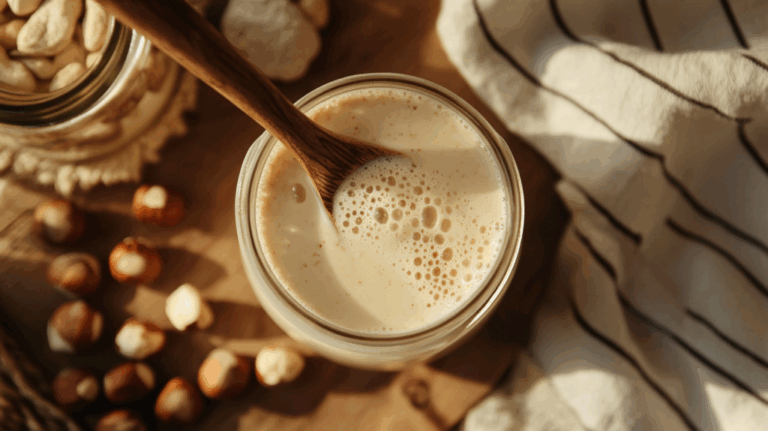Nature’s Detox: The Emerald Elixir’s Journey to Cleanse and Rejuvenate
In the relentless hum of modern existence, where the air we breathe, the food we eat, and even the thoughts we entertain can accumulate into a formidable burden, the quest for purity and vitality has never been more profound. We seek not merely to survive, but to thrive – to shed the dulling weight of toxins and stress, to reclaim the pristine clarity of mind and body that feels increasingly elusive. It is in this yearning for rejuvenation that we often turn our gaze, perhaps instinctively, to nature’s boundless pharmacy, where ancient wisdom whispers of potent remedies. Among these, one stands out, an emerald elixir steeped in history and validated by cutting-edge science: green tea.
This isn’t merely a beverage; it is a narrative woven through millennia, a testament to nature’s profound ability to heal, protect, and restore. From the misty mountains where its leaves first unfurled to the ceremonial cups raised in quiet reverence, green tea has journeyed from an esteemed medicinal herb to a global symbol of well-being. Its power lies not in a single dramatic act, but in a gentle, persistent alchemy – a daily ritual that systematically purges, fortifies, and revitalizes, inviting us on a deep, holistic journey of cleansing and rejuvenation. To understand its true might is to delve into its ancient roots, unravel its complex chemistry, and embrace its multifaceted gifts, allowing this humble leaf to guide us back to a state of radiant equilibrium.
The Ancient Elixir: A Journey Through Time and Culture
Our story begins, as many profound tales do, shrouded in the mists of legend. The genesis of tea is often attributed to the mythical Chinese Emperor Shen Nung, "The Divine Farmer," around 2737 BCE. As the lore goes, while boiling water beneath a wild tea tree, a few leaves drifted into his pot. Intrigued by the resulting aromatic infusion, he tasted it and felt an immediate sense of invigoration and clarity. Thus, tea was born, not just as a drink, but as an accidental discovery that would profoundly shape cultures and health practices across the globe.
From these mythical origins, tea cultivation flourished in ancient China, initially prized for its medicinal properties. Buddhist monks, seeking sustained focus during meditation, adopted tea as a vital aid, recognizing its ability to calm the mind while sharpening concentration – a delicate balance that spoke to its unique chemical composition. As Buddhism spread to Japan in the 9th century, so too did tea, carried by emissaries and monks. In Japan, tea evolved into an art form, culminating in the elaborate and deeply spiritual Chadō, or "Way of Tea," a ritualized preparation and presentation that elevates the act of drinking tea to a profound practice of mindfulness, respect, and inner peace.
For centuries, tea was a luxury, a symbol of status and a powerful medicine, its benefits observed and passed down through generations. Ancient texts praised its ability to aid digestion, dispel fatigue, and even prolong life. While early understanding was empirical, based on observation and experience, these ancient wisdoms laid the groundwork for the scientific inquiry that would later validate green tea’s incredible potential. The journey of the tea leaf, from the skilled hands that plucked it, to the meticulous processes of steaming and drying that distinguish green tea from its darker counterparts, is itself a testament to human ingenuity and reverence for nature’s gifts. Unlike black tea, which undergoes full oxidation, green tea leaves are minimally processed, often steamed or pan-fired shortly after harvesting, a critical step that preserves its vibrant green color and, more importantly, its delicate yet potent array of bioactive compounds. This preservation is the secret to its unparalleled detoxifying and rejuvenating power, a secret known intuitively by ancient healers and now meticulously unraveled by modern science.
Deconstructing the Green Gold: The Science Behind the Detox
To truly appreciate green tea’s detoxifying prowess, we must look beyond the comforting steam of the cup and peer into its intricate molecular architecture. Green tea is a veritable pharmacological treasure trove, a symphony of phytochemicals working in concert to cleanse, protect, and restore. The stars of this show are undoubtedly the catechins, a class of polyphenols that account for a significant portion of green tea’s dry weight. Among these, Epigallocatechin Gallate (EGCG) reigns supreme, often hailed as the most abundant and potent antioxidant in green tea.
Imagine EGCG as a microscopic shield and scavenger within your body. Our daily lives expose us to a barrage of free radicals – unstable molecules generated by pollution, stress, processed foods, and even normal metabolic processes. These free radicals wreak havoc by damaging cells, DNA, and proteins, contributing to aging, inflammation, and chronic diseases. EGCG and other catechins neutralize these rogue molecules, effectively disarming them before they can inflict damage. This antioxidant defense is foundational to green tea’s detox capabilities, as it directly protects our cells from the oxidative stress that burdens our systems.
But green tea’s detoxification narrative extends far beyond mere antioxidant activity. It actively engages with our body’s primary detox organs, particularly the liver. The liver is a sophisticated detoxification factory, processing everything from environmental toxins to metabolic waste products through two main phases. In Phase I detoxification, enzymes like the cytochrome P450 family chemically transform toxins into more reactive, water-soluble forms. In Phase II detoxification, these intermediates are then conjugated with other molecules (like glutathione, glucuronic acid, or sulfate) to make them even more water-soluble and easily excreted from the body via bile or urine. Green tea catechins have been shown to modulate these crucial pathways, enhancing the activity of beneficial detox enzymes (like glutathione S-transferases) while potentially inhibiting those that might produce harmful byproducts. This means green tea doesn’t just clean up after toxins; it helps our liver process them more efficiently from the outset.
Beyond the liver, green tea plays a significant role in fostering a healthy gut microbiome, an often-overlooked but critical component of detoxification. The trillions of microorganisms residing in our intestines profoundly influence our health, immunity, and even mood. A balanced microbiome can break down toxins, synthesize vitamins, and regulate immune responses. Green tea polyphenols act as prebiotics, nourishing beneficial gut bacteria and inhibiting the growth of harmful pathogens. A healthy gut ensures efficient elimination of waste and toxins, preventing their reabsorption into the bloodstream, thus completing a vital loop in the detox process.
Furthermore, chronic inflammation is a silent epidemic, underlying countless chronic diseases and contributing to a general feeling of malaise. Green tea’s catechins possess powerful anti-inflammatory properties, inhibiting the production of pro-inflammatory cytokines and enzymes. By quelling systemic inflammation, green tea reduces the burden on the body, allowing it to focus its resources on repair and regeneration rather than constant damage control. This reduction in inflammation is a key component of feeling truly "rejuvenated."
Finally, while subtle, green tea acts as a mild diuretic, encouraging the kidneys to filter and excrete waste products more effectively. This gentle flushing action supports kidney function and ensures that detoxified compounds are efficiently removed from the body, preventing their accumulation.
In essence, a cup of green tea unleashes an unseen army within you. EGCG, L-theanine, and other compounds embark on a molecular dance, sweeping away cellular debris, bolstering your liver’s defenses, nurturing your gut’s microbial ecosystem, and extinguishing inflammatory fires. It’s a holistic detoxification strategy, deeply rooted in the intelligence of the plant world, designed not just to cleanse, but to pave the way for a deeper, more profound state of rejuvenation.
Beyond Detox: The Multifaceted Benefits of Rejuvenation
While green tea’s detoxifying prowess is undeniable, its true magic lies in how this cleansing translates into a profound and multifaceted rejuvenation of the entire being. It’s not merely about removing the bad; it’s about optimizing the good, fostering vitality that radiates from within.
One of the most extensively researched benefits is its profound impact on cardiovascular health. Regular green tea consumption has been linked to a reduction in LDL ("bad") cholesterol and triglycerides, while helping to maintain healthy HDL ("good") cholesterol levels. Its antioxidants help prevent the oxidation of LDL cholesterol, a crucial step in the formation of arterial plaque. Furthermore, green tea improves endothelial function – the health of the inner lining of blood vessels – contributing to better blood flow and healthier blood pressure regulation. For a heart burdened by modern diet and stress, green tea offers a gentle but powerful protective embrace, helping to keep the cardiovascular system clear and resilient, much like a well-maintained irrigation system.
The journey of rejuvenation also extends to the very seat of our consciousness: the brain. Green tea is renowned for its unique ability to enhance brain health and cognitive function. This is largely due to the synergistic action of its moderate caffeine content and the amino acid L-Theanine. Unlike the jittery rush associated with coffee, the L-Theanine in green tea promotes alpha brain wave activity, inducing a state of calm alertness, improved focus, and enhanced memory, without the typical caffeine crash. Beyond acute effects, catechins like EGCG exhibit neuroprotective properties, safeguarding brain cells from oxidative damage and inflammation, and research suggests potential roles in reducing the risk of neurodegenerative diseases like Alzheimer’s and Parkinson’s. For a mind often overwhelmed by information overload and mental fatigue, green tea offers a clear, steady beacon of mental clarity and resilience.
In an era grappling with metabolic challenges, green tea offers a compelling ally for metabolic health and weight management. Studies indicate that green tea can modestly boost metabolism and increase fat oxidation, particularly during exercise. Its catechins may also help regulate blood sugar levels by improving insulin sensitivity, thus reducing the risk of insulin resistance and type 2 diabetes. While not a magic bullet for weight loss, green tea supports a healthy metabolism, turning the body into a more efficient engine, burning fuel effectively and maintaining stable energy levels, a cornerstone of feeling truly vibrant.
The immune system, our internal army, also benefits significantly. Green tea’s antioxidants and anti-inflammatory compounds bolster immune system support, enhancing the body’s natural defenses against infections. Its antiviral and antibacterial properties can help ward off common illnesses, keeping us robust and resilient, less susceptible to the constant microbial challenges of daily life.
The desire for rejuvenation often manifests in visible ways, particularly concerning skin health and anti-aging. Green tea’s potent antioxidants combat free radical damage caused by UV radiation and environmental pollutants, which are major culprits in premature skin aging. Its anti-inflammatory properties can soothe irritated skin, making it beneficial for conditions like acne or rosacea. Some research even suggests it can help protect collagen and elastin, the proteins responsible for skin’s firmness and elasticity, thus preserving a youthful glow from the inside out.
Even our oral health reaps rewards. Green tea contains compounds that inhibit the growth of bacteria responsible for plaque formation, cavities, and bad breath, contributing to a healthier mouth and fresher breath.
While research is ongoing and complex, green tea has also garnered attention for its potential role in cancer prevention. Its catechins exhibit anti-proliferative effects, meaning they can inhibit the growth of cancer cells, and promote apoptosis (programmed cell death) in various cancer types, while leaving healthy cells unharmed. While not a cure, incorporating green tea into a healthy lifestyle may contribute to reducing the risk of certain cancers, offering another layer of cellular protection.
Perhaps most profoundly, green tea contributes to mental well-being. The ritual of preparing and savoring a cup of green tea, combined with the calming effects of L-Theanine, can be a powerful antidote to stress. It promotes a sense of mindfulness and tranquility, reducing anxiety and improving mood. In a world clamoring for our attention, the quiet pause offered by green tea is a mini-meditation, a moment to reconnect with oneself, fostering an inner calm that is intrinsically linked to true rejuvenation.
This emerald elixir, therefore, doesn’t just cleanse; it nourishes every facet of your being. It mends the heart, sharpens the mind, balances the metabolism, fortifies the immune system, beautifies the skin, and calms the spirit. It’s a holistic symphony of healing, a daily infusion that systematically rebuilds, restores, and revitalizes, allowing you to shed the old and embrace a new, vibrant self.
Integrating Green Tea into Your Lifestyle: A Ritual of Wellness
Embracing green tea as a tool for detox and rejuvenation is not merely about consumption; it’s about cultivating a ritual, a mindful practice that honors both the leaf and your body. To unlock its full potential, understanding how to choose, prepare, and integrate it into your daily life is key.
The world of green tea is wonderfully diverse, offering a spectrum of flavors and nuanced benefits.
- Matcha, the finely ground powdered green tea, is perhaps the most potent. Because you consume the entire leaf, you ingest a higher concentration of catechins, L-Theanine, and chlorophyll. It offers a vibrant, grassy flavor and a sustained, focused energy.
- Sencha, the most popular green tea in Japan, offers a refreshing, slightly astringent taste with a balanced profile of nutrients.
- Gyokuro, a shaded green tea, boasts a rich, umami flavor and even higher L-Theanine content, promoting deep relaxation and alertness.
- Bancha is a common, everyday tea, often with larger leaves and a more robust flavor, while Genmaicha is a unique blend of green tea with roasted brown rice, offering a nutty, comforting aroma.
Choosing a high-quality, organic green tea is crucial to avoid pesticides and ensure maximum purity and potency.
Proper brewing is paramount to extracting green tea’s beneficial compounds without bitterness. Unlike black tea, green tea is delicate and sensitive to high temperatures.
- Water Temperature: Aim for water between 160-180°F (70-82°C). Boiling water will scorch the leaves, releasing excessive tannins and resulting in a bitter taste while degrading some beneficial compounds.
- Steeping Time: Generally, 1-3 minutes is sufficient. Shorter steeping yields a lighter, sweeter brew, while longer steeping (especially at higher temperatures) can increase bitterness. Experiment to find your perfect balance.
- Leaf Quantity: A good rule of thumb is one teaspoon of loose-leaf tea per 8 ounces of water, but this can be adjusted to personal preference.
Integrating green tea into your daily routine should be a pleasurable experience. Aim for 2-3 cups a day to reap the most significant benefits.
- Timing: Many prefer a cup in the morning to gently awaken the senses and promote focus, or in the afternoon for a sustained energy boost. It’s generally advisable to drink green tea between meals rather than directly with them, as catechins can mildly inhibit non-heme iron absorption (iron from plant sources). If you are sensitive to caffeine, avoid drinking it late in the evening.
- Beyond the Cup: Green tea’s versatility extends beyond brewing. Matcha, in particular, can be incorporated into smoothies, lattes, oatmeal, or even baked goods, infusing your diet with its potent nutrients. Topically, cooled green tea bags can be used as compresses for tired eyes or skin, while homemade green tea masks can leverage its anti-inflammatory and antioxidant properties for skin rejuvenation.
While green tea is overwhelmingly beneficial, a few cautions and considerations are important for a knowledgeable audience. Individuals sensitive to caffeine should monitor their intake. Those on blood-thinning medication like Warfarin should consult their doctor, as vitamin K in green tea can potentially interfere with its effects. As with any powerful botanical, sourcing matters; opt for reputable brands that prioritize purity and sustainable practices.
Ultimately, integrating green tea into your lifestyle transforms it from a mere beverage into a mindful ritual. It’s a moment of pause in a chaotic world, an act of self-care that nourishes, protects, and revitalizes you from the inside out. Each cup becomes a quiet conversation with nature, a conscious choice to cleanse the old and embrace the new, paving the way for a more vibrant, balanced, and rejuvenated existence.
Conclusion: The Timeless Ally
The journey of green tea, from ancient legend to modern scientific validation, is a compelling narrative of nature’s enduring power. It stands as a profound testament to the intricate wisdom embedded within the plant kingdom, offering a gentle yet potent solution to the challenges of contemporary living. We began our quest for purity and vitality, seeking to shed the burdens of toxins and stress, to reclaim a pristine sense of self. What we found in green tea is not just a detoxifying agent, but a holistic ally for profound rejuvenation.
This emerald elixir, steeped in millennia of human experience and now meticulously deconstructed by science, orchestrates a symphony of cellular protection, liver support, gut harmony, and systemic anti-inflammation. Its catechins, particularly EGCG, act as vigilant guardians, neutralizing free radicals and empowering our body’s innate cleansing mechanisms. Yet, its story extends far beyond mere detoxification. Green tea breathes new life into our cardiovascular system, sharpens our minds with focused clarity, balances our metabolism, fortifies our immune defenses, beautifies our skin, and, perhaps most importantly, calms the restless spirit.
To embrace green tea is to invite a daily ritual of wellness, a mindful pause that nurtures every facet of your being. It is a commitment to a gentler, more sustained path towards vitality, a journey where ancient wisdom and modern science converge to offer a simple, accessible key to profound well-being. So, as you hold that warm cup, feel the subtle energy stir, and taste the earth’s refreshing essence, remember the millennia-old story it carries. Let green tea be your timeless ally, guiding you back to a state of radiant health, where cleansing leads to clarity, and rejuvenation blossoms into a life lived with renewed vigor and serene purpose.






